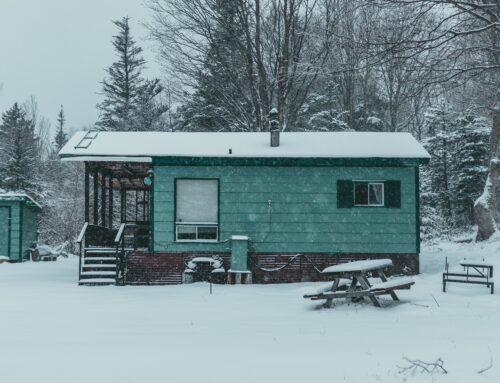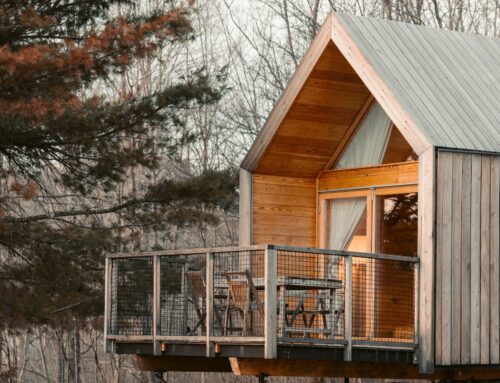There are many things you can do with an accessory dwelling unit (ADU) on your property. They can serve as an independent-yet-close living space for a family member, a private home office, a professional studio, and many other things. However, one of the most popular uses for an ADU is as a rental unit that generates passive income without having to buy a second property.
An ADU can be profitable both in the short term and in the long term. How much profit you can make from an ADU depends on the type of structure you build, where it is located, and other factors. In this article, we take an in-depth look at how an ADU can be profitable, the costs of building one, and how to calculate the profit you can make from one. You’ll also find a list of things to consider before you get started.
Is an ADU Profitable?
The short answer is that yes, an ADU can be profitable in many cases. And while that isn’t true 100% of the time, with thorough research, careful planning, and a good ADU contractor, you can find out whether or not you can profit from building one before you break ground. There are several ways in which an ADU can be profitable, both in the short term and in the long term – and often both.
ADU Profitability: Short-Term
An ADU on your property can bring in short term profits when you use it as a rental unit. Building an accessory dwelling tends to be significantly cheaper than buying an additional property but can be rented at rates that aren’t much lower.
Depending on local regulations, you can rent your ADU in one of two ways:
- Short-term rental: You can list your ADU on sites like AirBNB or VRBO as a short-term rental property for vacationers, business travelers, and other visitors to your area. If you live in an area that gets a significant number of tourists and other travelers, this can be very profitable. However, it requires more management and upkeep than a long-term rental.
- Long-term rental: ADUs can also serve as traditional rental units, where tenants sign a long-term lease. Long-term rentals can provide a steadier, more predictable income but may not bring in as much money as a short-term rental. While they require less day-to-day attention, they are also subject to more regulations and require more paperwork. Using your ADU as a long-term rental is an especially good option if you live near a college or university.
ADU Profitability: Long-Term
Putting an ADU on your property can also generate significant profit years down the road. Like any home addition, an accessory dwelling adds square footage and therefore value to your home. However, ADUs often generate a higher return-on-investment than other home additions because of their usefulness and ability to bring in additional income.
This is especially true in areas where property values are growing. The value they add to a home is compounded by the increasing value of the property overall. In addition, as home prices and rents increase, properties with an existing ADU become even more valuable and attractive to buyers.

How To Estimate ADU Profit
Determining how much profit you can make from an ADU isn’t an exact science. But with enough research and consideration, you can get a reasonable idea of what you might make from building one.
In the section below, we detail the steps involved in estimating your potential ADU profit. While it is a good idea to do this research yourself, we also offer profitability estimates as a free service to prospective clients. With a few pieces of information about your current property and the ADU you hope to build, we can provide you with a detailed estimate of costs and potential revenues. Click the button below to get started.
1. Calculate the Cost of Your ADU
The first step in estimating how much profit you can make from an ADU is figuring out how much it will cost you to build it. There are several factors that contribute to how much your project will cost, including:
- Size: Much of the cost of your ADU depends on how big it is. As you’d expect, the larger your ADU is, the more it is likely to cost.
- Design: Different ADU designs have varying features and construction methods that affect their cost. Your contractor should have several designs to choose from and should be able to tell you the cost differences between them.
- Materials: You can choose the types of materials used to finish the interior of your ADU. What types of flooring, surface materials, and other design choices will impact your build cost.
- Site needs: Building an ADU will require some amount of site modification. However, some sites need less work than others. You’ll need to consider the cost of preparing a site for a foundation, building the foundation, and running utilities like water and electric lines to the unit.
- Local factors: Labor rates, permitting fees, and other factors can vary between different areas. In general, it is more expensive to build an ADU in areas with a higher cost of living.
A trustworthy ADU builder will provide you with an accurate estimate for your project that includes costs beyond just the construction. Some builders leave additional costs such as permitting fees out of the initial estimate to make the price seem more attractive.
2. Calculate Regular ADU Financing Costs
After you’ve determined how much your ADU will cost to build, you’ll need to figure out how to pay for it. Unless you have the cash on hand to fund construction, that means taking out a loan. The most popular types of ADU financing are home equity lines of credit (HELOCs) and home equity loans, but there are other options.
When you finance an ADU build, you will have to make regular monthly payments towards the loan. This is likely to be your single biggest cost and therefore, has a significant impact on the profit you can make from your unit.
3. Calculate Additional Expenses
Your finance payments might be the biggest expense for your ADU, but they aren’t the only one. If you are looking to make short-term profit from an ADU rental, there are several other costs to consider.
Repairs and Maintenance
Whether you plan to use your ADU as a short-term rental or a long-term one, you will be responsible for maintaining it. That means making repairs as needed and taking care of regular maintenance items, such as changing air filters and general upkeep. When it comes to repairs, costs are not fully predictable, so it’s good to overestimate what you might spend to keep your property in good condition.
Utilities
If you use your ADU as a long-term rental, you can make your tenant responsible for paying for utilities such as water, electricity, and internet. But if you want to rent it on a short-term basis, you’ll have to pay for those costs yourself. Again, it’s good to overestimate these costs as some utilities like water and electricity can vary significantly.
Management
Managing a rental property, especially a short-term one, can be a full-time job and a headache. Unless you have the time and desire to take that on yourself, you’ll want to hire a property management firm to handle those responsibilities for you.
Third-party management fees vary from one company to another. But in general, most firms take between 8% and 12% of the rental income as a fee for managing a long-term rental. Short-term property managers typically take a bigger cut because of the additional work involved.
Income Taxes
You will, of course, have to pay taxes on any rental income your ADU brings in. This includes federal, state, and local taxes. While state and local taxes vary from place to place, they will be consistent for you unless the rates change. However, the amount you pay in taxes will depend on how much income your ADU generates.
4. Estimate Rental Unit Income
Once you’ve estimated the costs of building and maintaining your ADU, you’ll want to get an idea of the amount of money your unit can bring in. While it is good practice to overestimate your costs to be safe, the smart move is to underestimate your potential revenue.
Factors That Influence ADU Rental Unit Income
The income you can make from an ADU rental depends on its value. There are several key factors that determine the rental value of your ADU. Some of these factors are within your control, while others are external factors that you cannot influence.
Size and Configuration
One of the biggest factors in the value of your ADU rental is how big it is and the amount of bedrooms and bathrooms it has. As you’d expect, the bigger it is and the more bedrooms and bathrooms it has, the more you can expect to rent it for.
Location
Where your ADU is located is also a major factor in its rental value. Rent prices vary between different areas, and your rental will should fall within a normal range for your area. But it’s not just the city or town where your unit is located. The proximity of your ADU to shopping, dining, and entertainment also plays a role, just as it does in the price of a primary residence.
You can find data about average rents in your area, often down to the ZIP code, from online resources. But it’s also a good idea to look for similar properties near you to see what they rent for.
Features and Amenities
Beyond bedrooms and bathrooms, the features you build into your ADU can also impact the rental price. Features like premium countertops or bath fixtures can add to the appeal of your property and drive a higher price for rent. Amenities such as a hot tub or deck can also substantially increase how much your property is worth as a rental.
Average Occupancy Rates
Occupancy rates in your area are also an important factor to consider. For long-term rentals, lower occupancy rates mean you’ll be competing with other landlords for tenants and therefore may need to keep your prices lower to attract renters. For short-term rentals, occupancy rates also affect how often your property is likely to be rented and therefore, the amount of income it is likely to bring in. Note that for short-term rentals, occupancy rates can be seasonal. Make sure to account for this when doing your research.
Short-Term vs. Long-Term Rental
Deciding whether to use your ADU as a short-term or long-term rental can be difficult. Short-term rentals have a much higher profit ceiling than long-term rentals, but they also come with more maintenance costs. Unless you live in an area that gets lots of visitors year-round, your unit will likely sit empty for a significant portion of the year.
Long-term rentals have a lower income potential than short-term rentals for the most part. However, the income from a long-term rental is much more predictable and consistent. They also tend to be cheaper to maintain.
5. Subtract Total Expenses From Projected Income
The equation for determining profit is simple: subtract costs from revenue. While this is just an estimate, if you’ve done thorough research, you can get a good idea of what you might make in the short-term from using your ADU as a rental unit. Again, the responsible thing to do is to overestimate your potential costs and underestimate your potential revenue. Exceeding expectations is better than falling short of them.
6. Calculate Added Value To Your Property
When you build an ADU, you can generate short-term profit from renting it out, but you can also generate a profit from the value it adds to your property when you decide to sell it. The added value of an ADU can be difficult to estimate, especially in markets where property values are in flux. However, you can be fairly certain that an additional dwelling on your property will add significant value to it, giving you another source of profit in the long-term.
How Much Profit Can You Make With an ADU? Conclusion
There are lots of factors to consider if you want to estimate how much profit you can make with an ADU. The size and layout of your unit plays a significant role, as do the features and amenities you build into it. Location also has a large impact on the value of your ADU and therefore the profit you can make from it. How you decide to rent it will also affect how much money you can make.
At Feel Love Homes, we can take a lot of the legwork out of estimating your potential profit from building an ADU. In fact, it is a standard step in our consultation process. While it’s always good to research things for yourself, our team can provide you with a detailed estimate of the costs and revenues of using your ADU as a rental. Click the button below to start a conversation and find out how much profit you can make.






Leave A Comment